It’s one of the most prominent monuments of Ancient Egypt and one of the country’s most popular attractions.
In this post, we’ll take a closer look at some of the most interesting facts about Luxor Temple, one of the greatest Egyptian temples ever built.
1. It dates back to the 15th century B.C.
The Temple of Luxor is a large temple complex that was founded around the year 1400 B.C. That’s a long time ago, don’t you think?
Most of the temple was built by Ramesses II who is considered to be one of the most powerful pharaohs of Ancient Egypt.
His reign lasted from 1279 to 1213 B.C. Many additions were made to the temple by other pharaohs such as Amenhotep III and Tutankhamun.

2. There’s a chapel built by Alexander the Great
One of the most fascinating facts about Luxor Temple is that it was constructed in many layers and over many centuries.
Romans used the buildings for their own cults and used them as a legionary fortress. Christians and Muslims used chapels as churches and mosques in medieval times.
At the rear of the temple, there’s even a chapel built by Alexander the Great, who claimed to have been crowned at Luxor Temple, even though this notion is doubtful.
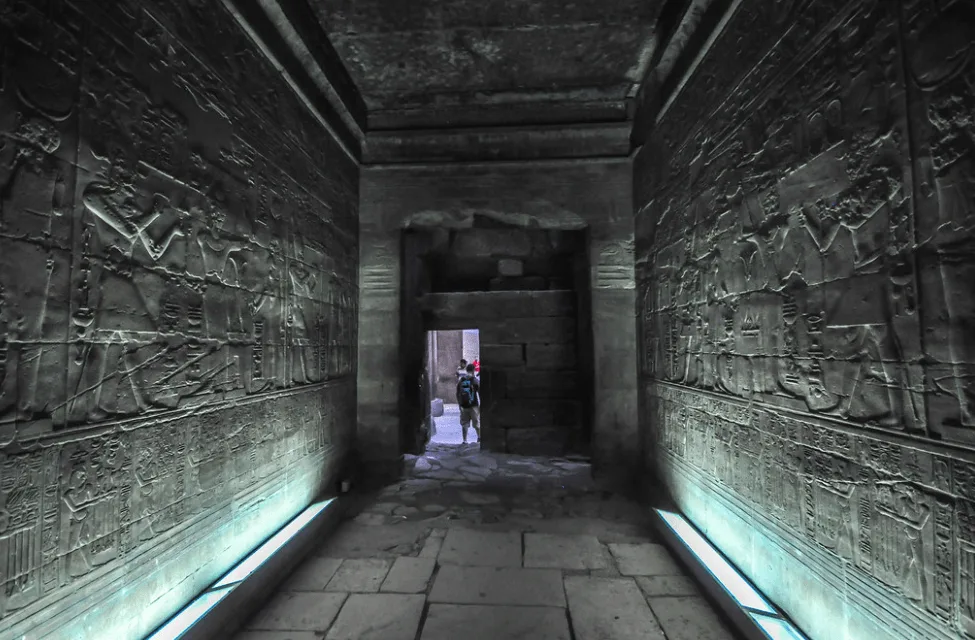
3. It’s located on the east bank of the Nile River
The city of Luxor, where the temple is located, is located about 800 kilometers (500 miles) south of the Mediterranean along the Nile River. It was considered to be a sacred place in Ancient Egypt.

The city was known as Thebes and used to be the capital of Ancient Egypt for long periods during the Middle Kingdom and New Kingdom eras.
Luxor Temple is located on the east bank of the Nile River and was known as “ipet resyt,” which translates to “the southern sanctuary.”
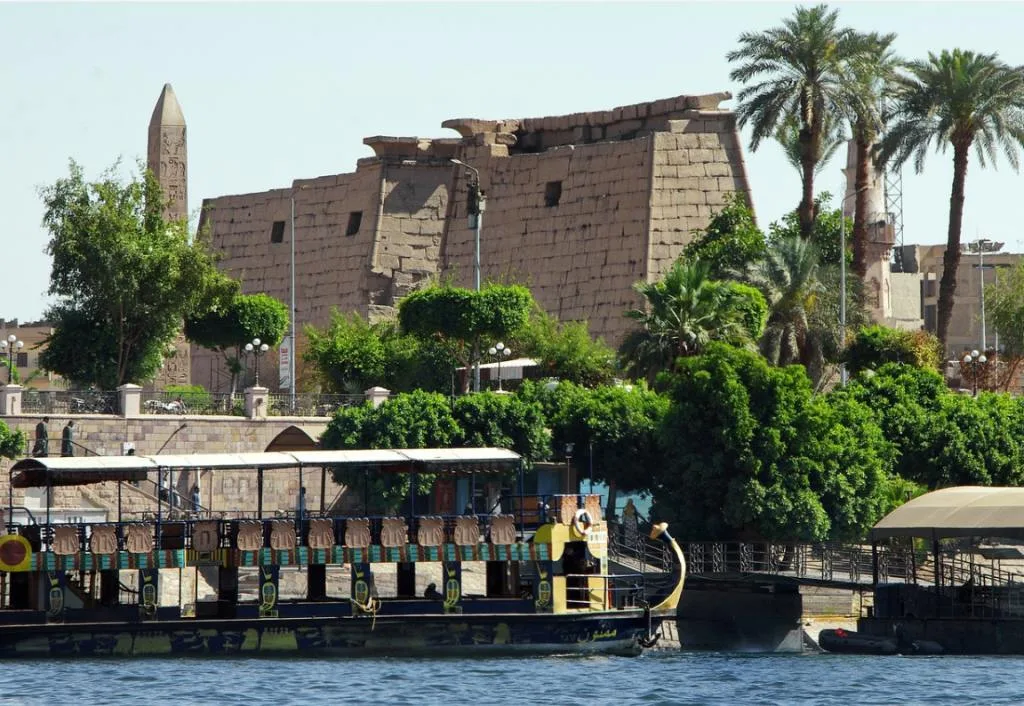
4. There’s a huge necropolis on the west bank as well
Luxor Temple is one of the two major temples on the east bank of the Nile River. The other famous temple is called “Karnak Temple” and is located about 2.5 kilometers (1.6 miles) north of the city of Luxor.
On the west bank of the Nile River, there’s a huge necropolis referred to as the “Theban Necropolis.” Here we can find 4 major mortuary temples, namely:
- Temple of Seti I at Gurnah
- Temple of Hatshepsut at Deir el Bahri
- Temple of Ramesses II (the powerful pharaoh, also called Ramesses the Great)
- Temple of Ramesses III at Medinet Habu
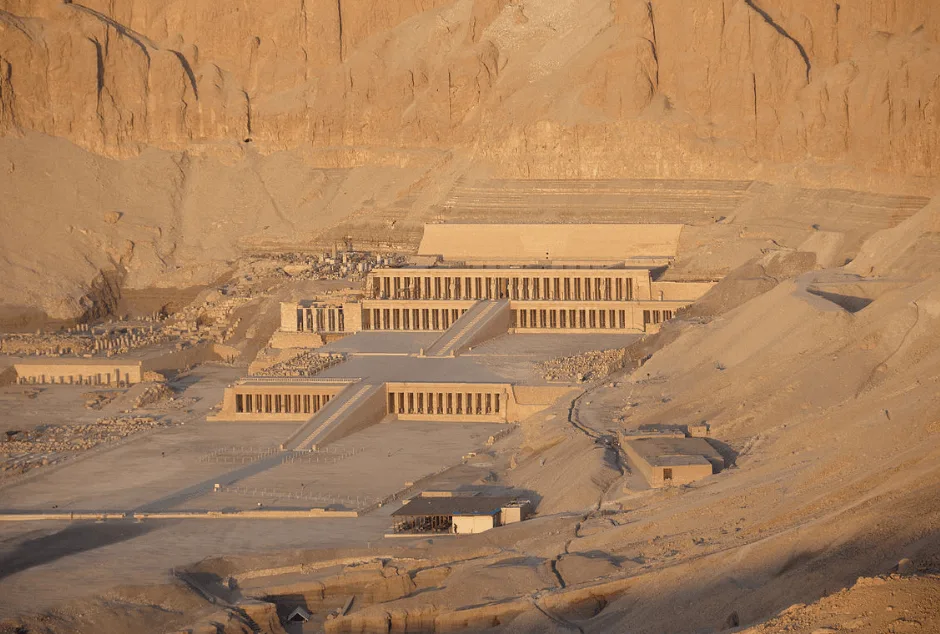
5. The Temple of Luxor is unique because of this
Unlike every other temple in Ancient Egypt, this one wasn’t dedicated to a certain god or a deified pharaoh. It was dedicated to the “rejuvenation of kingship.”
This makes it very likely that many of the great pharaohs in Ancient Egypt were crowned at Luxor Temple, a notion emphasized by Alexander the Great’s mention that he was crowned in Luxor as well.
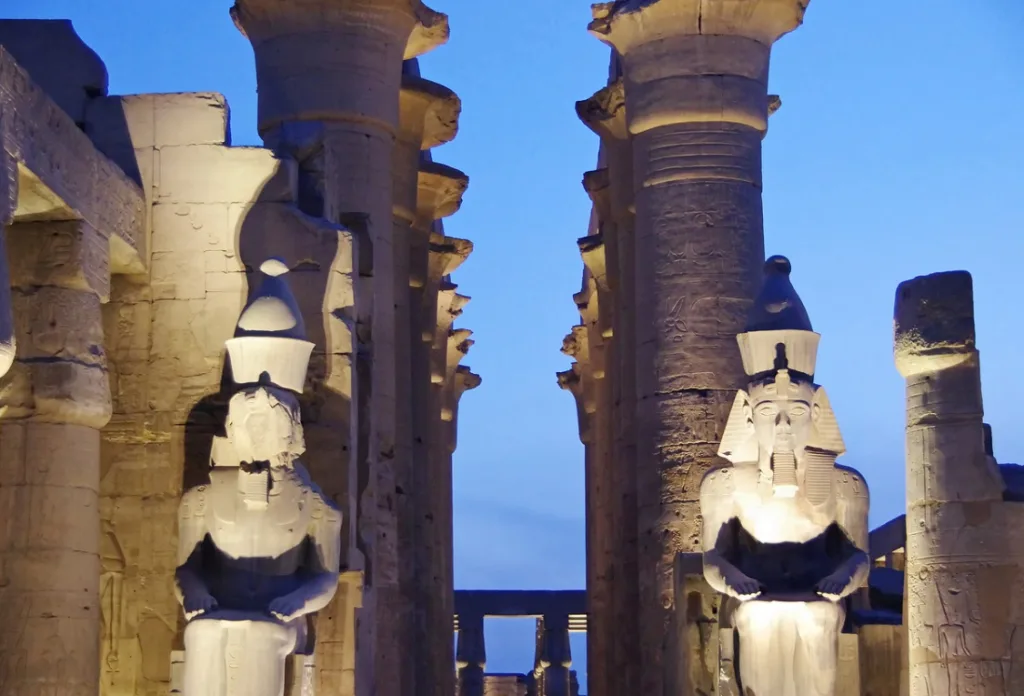
6. The figures at the entrance represent the deified Ramesses II
Even though the temple wasn’t dedicated to a specific deified pharaoh, it was dedicated to the divine ruler of the Kingdom, also referred to as the cult of the “Royal Ka.”
The massive seated statues at the entrance are clear examples of Ka-Statues and depict pharaoh Ramesses the Great who represents the embodiment of the Ka as the Pharaoh of Ancient Egypt.
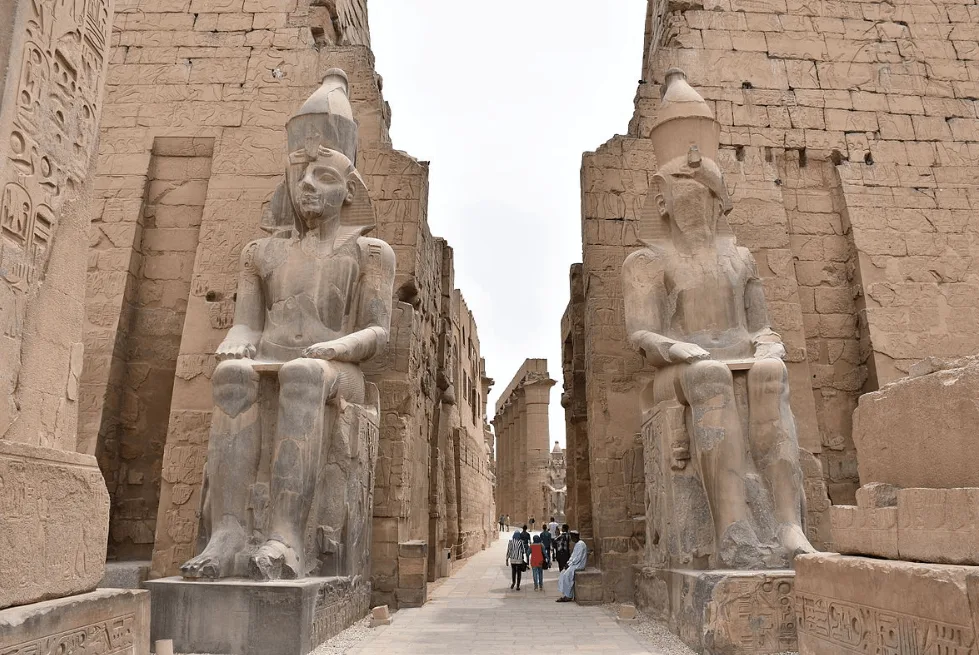
7. Luxor Temple was built with Nubian Sandstone
The temple was constructed with sandstone coming from a region called the Gebel el-Silsila area. This type of sandstone is also referred to as “Nubian Sandstone” and was quarried in the South-West of Egypt.
Nubian sandstone wasn’t limited to being used just in the south of Egypt, it was also used in monuments and temples in the north of the country, taken there by boat on the Nile River.
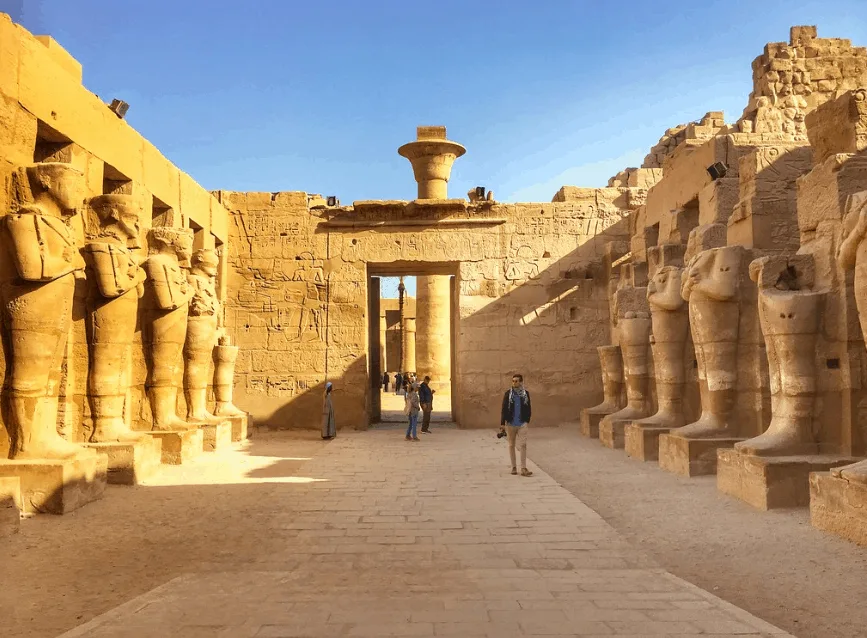
8. One of the obelisks at the entrance was used as a gift to Paris
If you have ever been to Paris then you might have noticed that there’s an Ancient Egyptian monument located in one of the most popular spaces in the city. And no, I’m not talking about the Louvre Pyramid!
On the Place de la Concorde, one of the most infamous places during the French Revolution as both King Louis XVI and his Queen Marie Antoinette were publicly executed here, there’s an obelisk that used to stand at the entrance of the Luxor Temple.
The obelisk was given to France in 1829 as a gift by the Khedive of Egypt at the time, Muhammad Ali Pasha. The King of France, Louis Philippe, had it placed in the center of Place de la Concorde on October 25, 1836.
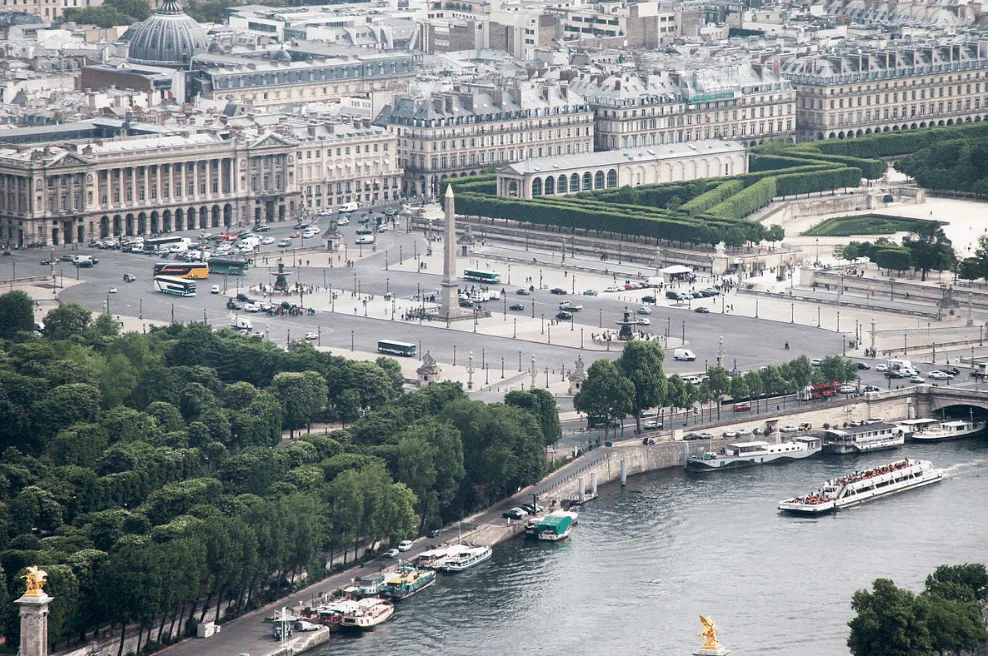
9. The original idea was to give away both obelisks
The 3000+ years old obelisk that made it to France weighs an astounding 250 tonnes (280 short tons) and stands about 23 meters (75 feet) tall. It took well over 3 years to transport to France as it only arrived on December 21, 1833.
The initial idea was to give both obelisks to France, but the second one, which is heavier than the one in Paris, turned out to be too heavy to transport at the time.
This meant that the French only got one in the end while the other one still decorates the entrance of the Temple of Luxor.
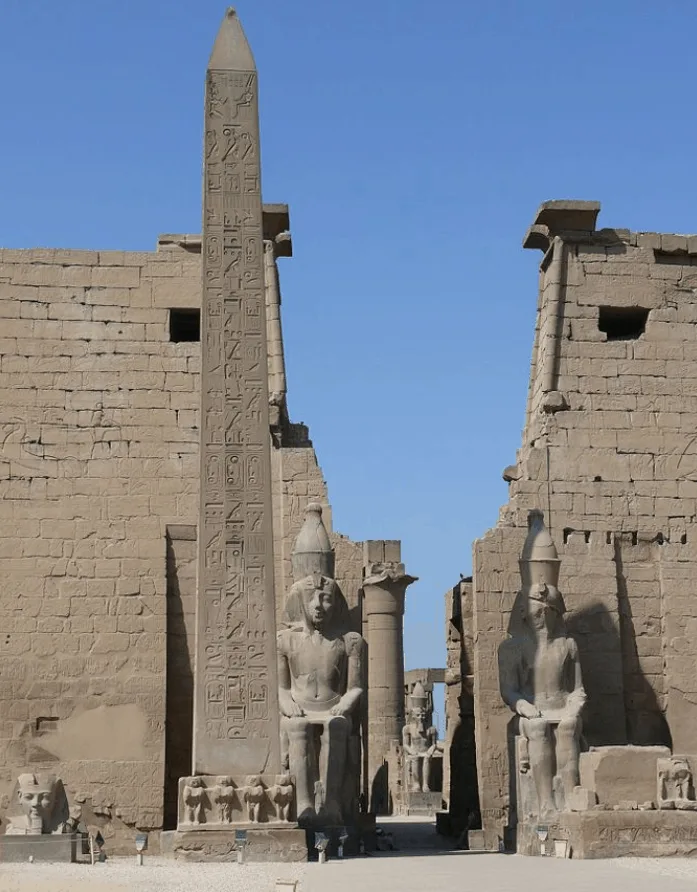
10. An active mosque was built on top of the temple
Before the year 1884, the temple remained covered in large amounts of rubble that had accumulated since medieval times.
The inhabitants of Luxor had simply built their houses in and around the temple, and an artificial hill was formed over the centuries which covered about 75% of the entire complex.
One building that didn’t suffer from this was the “Abu Haggag Mosque,” a part of the temple that was preserved as it was transformed into a church by the Romans in the year 395 A.D.
This church was subsequently transformed into a mosque in the year 640 A.D. This mosque is built on top of the ancient foundation of the temple, which means that this part of the temple has been used for continuous religious worship for over 3,400 years!

